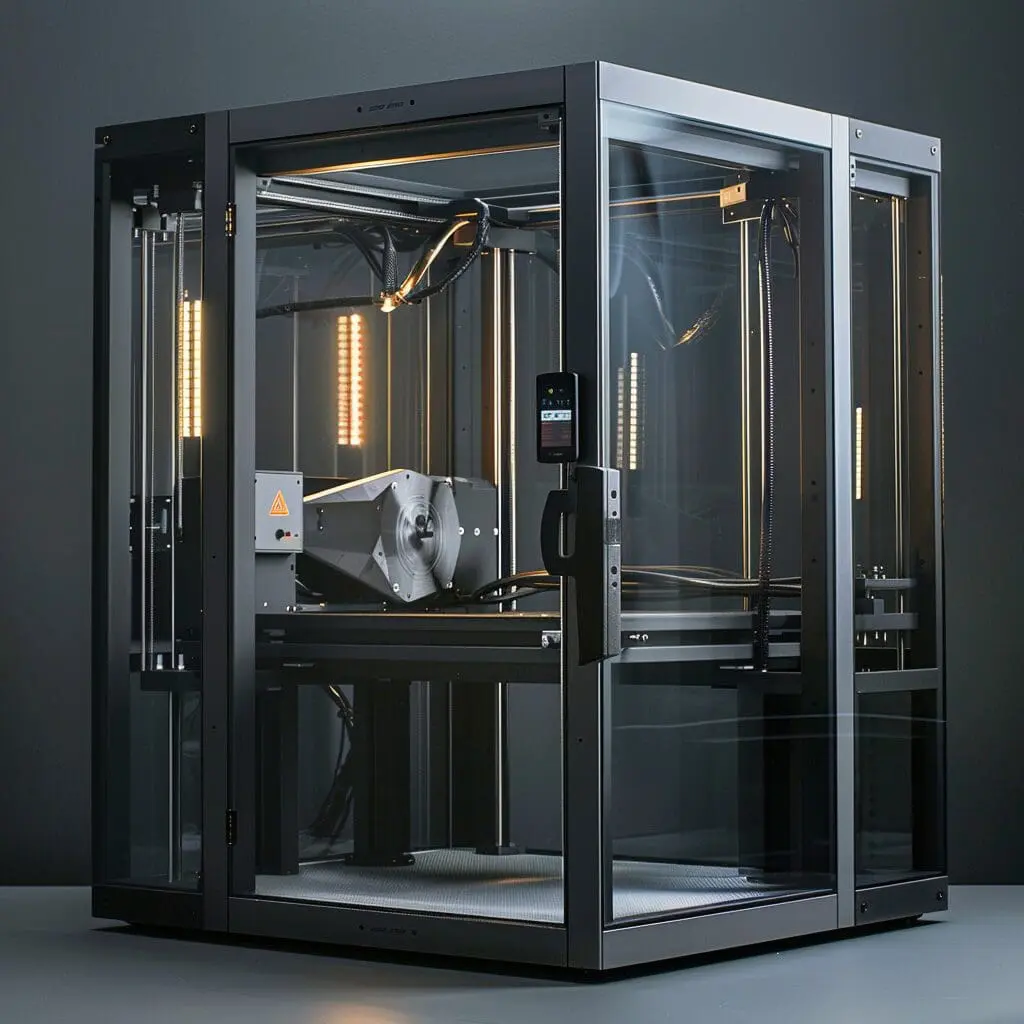
In an era emphasising sustainability, MIT’s development of a sustainable 3D printing technology marks a revolutionary shift toward green additive manufacturing. This advanced printer excels in automatically identifying and adjusting to the properties of sustainable materials, significantly reducing the environmental footprint of production processes. By facilitating the switch to a wider array of recyclable and bio-based raw materials, companies can better meet environmental regulations and the increasing demand for eco-friendly products. This sustainable 3D printing innovation not only champions the circular economy by encouraging the use of locally sourced materials and transforming waste into valuable printing supplies but also advances the construction industry by enabling the creation of novel products through additive manufacturing, cutting down on both time and costs.
The Massachusetts Institute of Technology (MIT) has once again led in technological innovation, now revolutionising traditional manufacturing processes with their latest development in 3D printing. Their innovative 3D printer addresses a major challenge in traditional manufacturing: the laborious task of modifying printing parameters for different materials, including building materials and plastic waste. MIT’s groundbreaking system automatically recognises and adjusts to the properties of a variety of, previously unknown, renewable and waste materials. This advancement not only streamlines the 3D printing process but also substantially reduces production time, making manufacturing more efficient and cost-effective. By enabling the integration of any potential waste material into the production process, this technology significantly reduces plastic waste and promotes the use of sustainable a building material. The potential of this technology extends far, enhancing creativity in product design and pushing the industry towards more sustainable and eco-friendly practices.
The Massachusetts Institute of Technology’s revolutionary 3D printer represents a significant step toward sustainable construction and a sustainable future. By being able to integrate waste materials and locally sourced substances as valuable printing material, this advanced technology overturns traditional manufacturing approaches. It offers businesses a new way to consider their use of resources, transforming what was once discarded into recycled filaments for new creations. This printer’s ability to handle a wide array of recyclable and bio-based materials marks a move toward a more regenerative, sustainable manufacturing landscape. Its role in minimising the carbon footprint of logistics and encouraging local production economies further highlights the comprehensive sustainability goals this cutting-edge 3D printing technology aims to achieve.
The launch of MIT’s sustainable 3D printer marks a significant step not only in eco-friendly manufacturing but also in the movement towards localising supply chains to drastically lower carbon emissions tied to logistics. This cutting-edge technology allows businesses to utilise locally sourced materials, including environmentally friendly materials like polylactic acid, for their 3D printing needs. This reduces the need for long-distance transportation of raw materials and building components, thereby decreasing material waste. With the capacity to use a wider range of renewable and recycled materials, this initiative aligns with green manufacturing principles. It also enables companies to lessen their dependence on global supply chains, which often face challenges related to sustainability and efficiency. By championing local sourcing and the use of a less traditional raw material through 3D printing, this innovative printer leads the way in minimising the carbon footprints of manufacturing processes and advances a more sustainable, environmentally conscious production methodology.
MIT’s launch of its sustainable 3D printer represents a major advancement for businesses aiming to integrate greener manufacturing techniques without sacrificing efficiency or innovation. This cutting-edge technology, a breakthrough in additive manufacturing, enables a seamless shift towards eco-friendly production by optimizing the use of various renewable printing materials, thereby significantly cutting down on waste generated and energy consumption. The printer’s innovative approach to uses of waste material for printing not only aids in waste reduction but also leverages recycled waste and bio-based materials. This aligns with the increasing consumer preference for sustainable products while promoting waste recycling. Moreover, the printer’s capacity to minimise the environmental impact through the efficient use of recycled and locally sourced materials offers companies a potent strategy to decrease their carbon footprint and bolster supply chain sustainability. MIT’s sustainable 3D printing technology stands as a transformative step in making additive manufacturing a key player in sustainable business practices globally, by fostering rapid prototyping and production at lower costs and higher speed, all while embracing the principles of the circular economy.
MIT’s revolutionary 3D printer is pioneering the future of additive manufacturing, fundamentally altering our approach to production in the digital age and promoting sustainable practices. This innovative technology is not only setting new standards for efficiency and creativity in the construction sector and beyond but is also leading the charge in eco-friendly manufacturing. By turning plastic waste into valuable materials and utilising renewable resources, the printer showcases how the past few decades of digital advancements can merge with efforts to conserve natural resources. It allows for the creation of complex, custom products while significantly reducing waste, minimising environmental impact, and slashing costs. This marvel of technology exemplifies the potential of additive manufacturing to harmonise with sustainable initiatives, paving the way for a future where digital fabrication plays a crucial role in both fostering economic growth and preserving the environment.
MIT’s innovative 3D printer showcases unparalleled adaptability and flexibility, crucial for adapting to the global market’s fast-evolving demands. This 3D printing technology enables manufacturers to quickly adapt to consumer preferences and environmental standards, facilitating the use of various renewable and recycled printing materials, including the innovative approach to turn plastic waste into valuable products. It streamlines the switch between materials without the need for manual adjustments, significantly reducing energy usage and enhancing efficiency from design to production. This capability is especially relevant in turning plastic waste into usable printing materials, directly contributing to sustainable construction practices. The printer’s automatic adjustment to different materials is a boon for the construction industry, allowing for the creation of personalised , eco-friendly products while leading the way in sustainable innovation. Additionally, its capacity to utilise local resources strengthens community bonds and boosts local economies, marking a significant step towards sustainable construction and development within the manufacturing sector.
MIT’s innovative 3D printer is leading the way toward greener manufacturing methods, significantly impacting the aviation industry. This advanced technology focuses on reducing the energy consumed during production by utilising bio-based materials, including recycled plastic from plastic bottles, ensuring less waste and enhanced chemical resistance in components. It represents a crucial shift in creating products, especially in aviation, where the demand for materials combining durability with environmental sustainability is high. By using plant-based plastics and recycled biodegradable materials, the printer significantly cuts down reliance on traditional fossil fuel-derived polymers, reducing the environmental footprint. This breakthrough is pivotal for businesses in the aviation sector seeking to incorporate sustainability into their operations, promoting a circular economy and supporting global efforts to reduce carbon emissions. MIT’s 3D printer, with its ability to process recycled plastic bottles into high-quality, chemically resistant aviation parts, stands as a cornerstone in the shift towards more sustainable manufacturing practices, generating less waste and setting a new standard in the industry.
MIT’s sustainable 3D printer marks a significant leap forward for companies striving to boost their efficiency and effectiveness while reducing waste. This innovation is pivotal in an era where energy-intensive processes are being scrutinised for their environmental impact. Offering a blend of speed, versatility, and sustainability, the printer emerges as a crucial asset for businesses eager to lead in the competitive market. Its capability to quickly prototype and manufacture with various renewable, plant-based materials and recycled inputs, like thermoplastic polyurethane, allows for substantial cuts in development time and material excess. This advancement not only enhances operational efficiency but also meets the rising demand for eco-friendly products among consumers. Additionally, the printer’s focus on using local, sustainable sources and its flexibility in adapting to rapidly evolving market needs underscore its value for companies aiming to minimise their carbon footprint while ensuring a dynamic and efficient production process. MIT’s 3D printer embodies not merely a stride toward sustainable manufacturing but a giant leap towards a business model that champions resource efficiency and adaptability, all while helping to significantly reduce waste and reliance on energy-intensive practices.


